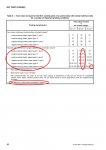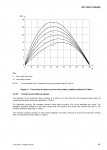gordo
Well-known member
Can someone explain the ISO 12467-2 dot gain chart?

What I'm looking for is what print conditions to the letters A-H stand for. They don't seem to be described anywhere in the document.
Also, are these target dot gains - i.e. for print condition "H" whatever that is, I should get 34% dot gain?
thx, gordon p

What I'm looking for is what print conditions to the letters A-H stand for. They don't seem to be described anywhere in the document.
Also, are these target dot gains - i.e. for print condition "H" whatever that is, I should get 34% dot gain?
thx, gordon p















